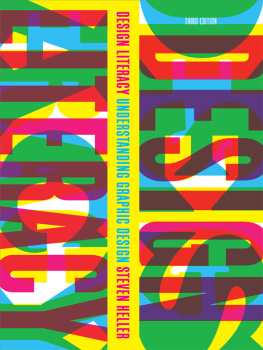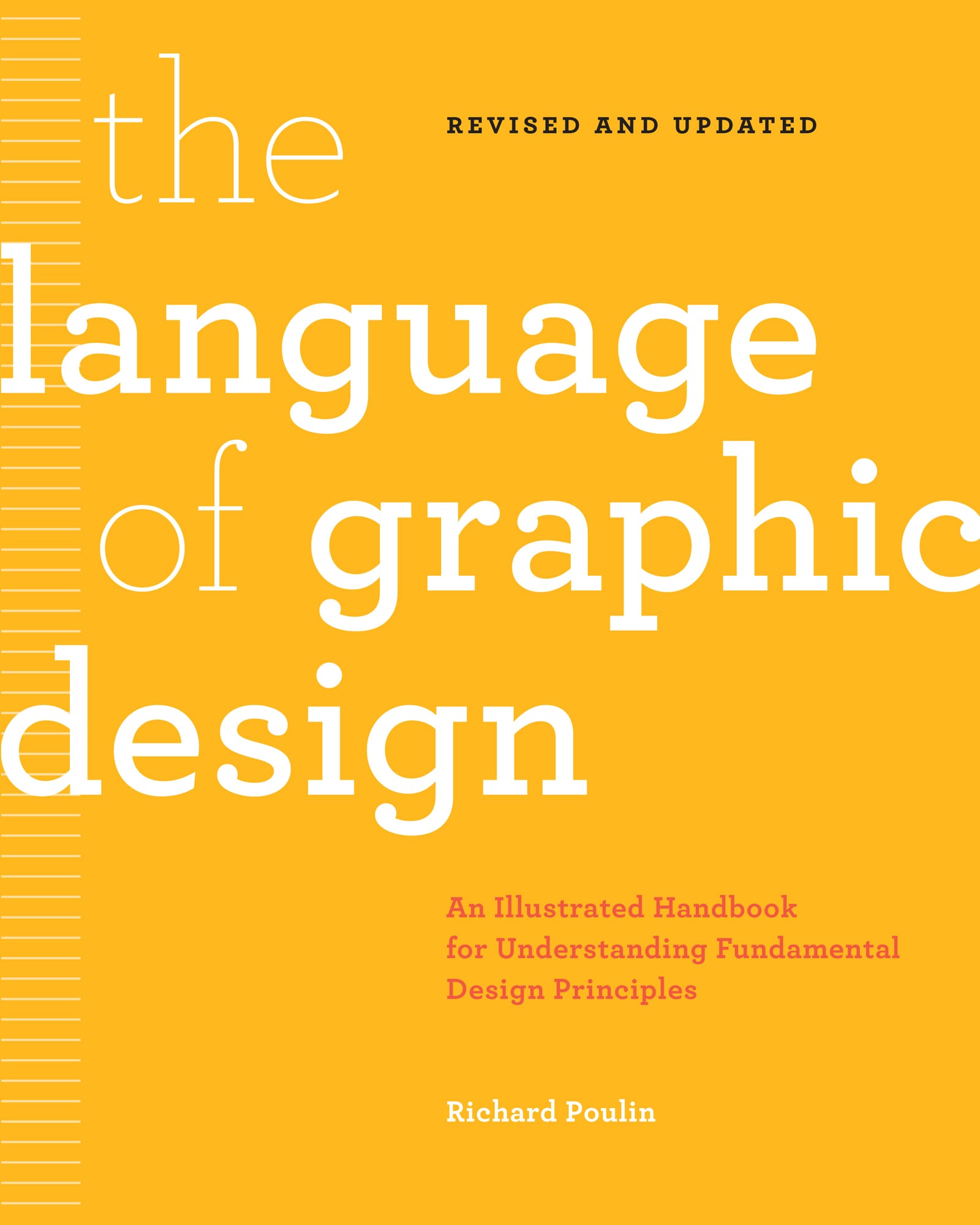REVISED AND UPDATED
the language of graphic design
An Illustrated Handbook for Understanding Fundamental Design Principles
Richard Poulin

introduction
language \'lan-gwij, -wij\ n
1 a: the words, their pronunciation, and the methods of combining them used and understood by a community
2 b: form or manner of verbal expression; specif: style
As a graphic designer, you are constantly being challenged by learning and visually communicating something new and different that can influence your understanding of graphic design or visual communications in the context of the real world. To effectively apply the discipline of graphic design, as well as have it evolve as you grow as a creative individual, you first have to fully embrace that graphic design is a unique visual language with its own alphabet, lexicon (vocabulary), and syntax (sentence structure).
For you to become adept in this visual language, you first need to be able to refer to a set of fundamental elements and principles time and time again so you can become more comfortable and versatile with speaking in this new and exciting vernacular. The Language of Graphic Design: An Illustrated Handbook for Understanding Fundamental Design Principles is intended to provide you with the knowledge, skills, and insights to create design solutions that inform, inspire, and reinforce your newly heightened sense of visually communicating and to enhance your visual literacy in graphic design.
As with any new languagewritten, oral, or visualthat you are attempting to understand, you first have to learn the fundamentals of that languageits ABCs so to speakincluding its definitions, functions, and uses so that you can ultimately communicate in nuanced and varied ways depending on what you want to say and who your audience may be. Your success as a graphic design student, as well as a practicing graphic designer, is ultimately dependent upon an in-depth understanding of the fundamental elements and principles of graphic design defined in this illustrated handbook.
Its not what you look at that matters, its what you see.
HENRY DAVID THOREAU (AMERICAN, 18171862) Author, Naturalist
Design elementssuch as point, line, shape, form, light, color, frame, image, and typographyare a graphic designers basic vocabulary. Design principles, such as movement, balance, symmetry, asymmetry, tension, expression, contrast, proportion, and grid are a graphic designers basic framework for using design elements in an effective manner to create memorable and meaningful visual messages in graphic design.
When you speak or write, you never think of that action as an unusual act. The reason for this is that you are taught at a very young age the fundamental requirements needed to speak and write in an accessible and universal language. The same cannot be said for the language of graphic design. However, as you were taught the basic skill sets of spelling, grammar and sentence structure, you can also be taught the same basic principles of graphic design and visual communications.
ASICS Tigers new brand identity is inspired by overlapping postings on the streets and applied through the use of over-scaled, layered compositions of bold photographic images and a custom sans serif typeface. See : Typography for detailed information on each of these fundamental design elements and principles.
BRUCE MAU DESIGN
Toronto, ON, CA
Bold intersecting lines and a vibrant color palette coupled with dramatic four-color photography and typography are used to create a striking, kinetic image that immediately communicates movement in this promotional poster for the Gibney Dance Spring Benefit in New York City. See : Image for detailed information on each of these fundamental design elements and principles.
POULIN + MORRIS INC.
New York, NY, USA
This book jacket series for a collection of Mostafa Mastoor's short stories reflects a sensitive balance of form and pattern by relying upon a combination of pure linear graphic elements, intense colors, extreme scale change, opposing compositional axes, and Arabic calligraphic letter-forms to create a strong, visual impact for the reader. See : Typography for detailed information on each of these fundamental design elements and principles.
STUDIO ABBASI
Tehran, IR
Like its first edition released in 2011, the organization of this newly updated, second edition of The Language of Graphic Design is based on the building blocks of Western languagethe 26 letters of our standard alphabet. Each of the books 26 chapters thoroughly explore a fundamental element and principle of graphic design with an in-depth, illustrated overview of what they are, why they are important, and how to use them effectively. Additionally, each chapter is supplemented with a narrative and visual sidebar that references a key historical benchmark in graphic design history that further illustrates each fundamental element or principle.
The challenge is for the graphic designer to turn data into information and information into messages of meaning.
KATHERINE M C COY (AMERICAN, B. 1945) Educator, Graphic Designer
Another important thread found throughout this handbook is based on one of my convictions as an educator. On its most basic level a graphic designer is a visual interpreter, however you cant be an effective visual interpreter and communicator without first having an extensive and thorough understanding and respect for narrative form. I have always reinforced the value of the written word to my graphic design students. Words should never be taken for granted, therefore, I insist that my students always refer to a dictionary to remind themselves of the meaning of words (familiar or not). This conviction is further reinforced by beginning each chapter with the dictionary definition of that fundamental element or principle. I believe this strengthens their understanding of what they ultimately need to interpret visually. With this handbook, I hope to achieve the same with youthe reader.
Creativity... involves the power to originate, to break away from the existing ways of looking at things, to move freely in the realm of the imagination, to create and recreate worlds fully in ones mindwhile supervising all this with a critical inner eye.
OLIVER SACKS (BRITISH, 19332015) Author, Educator, Neurologist
When collectively considered, these 26 fundamentals allow you to visually communicate in a more accessible, universal visual language, and have you become a more effective and successful graphic designer and visual communicator. When you do not rely on these fundamental design elements and principles, your work will be ineffective, non-communicative, and will not resonate with an audience.










